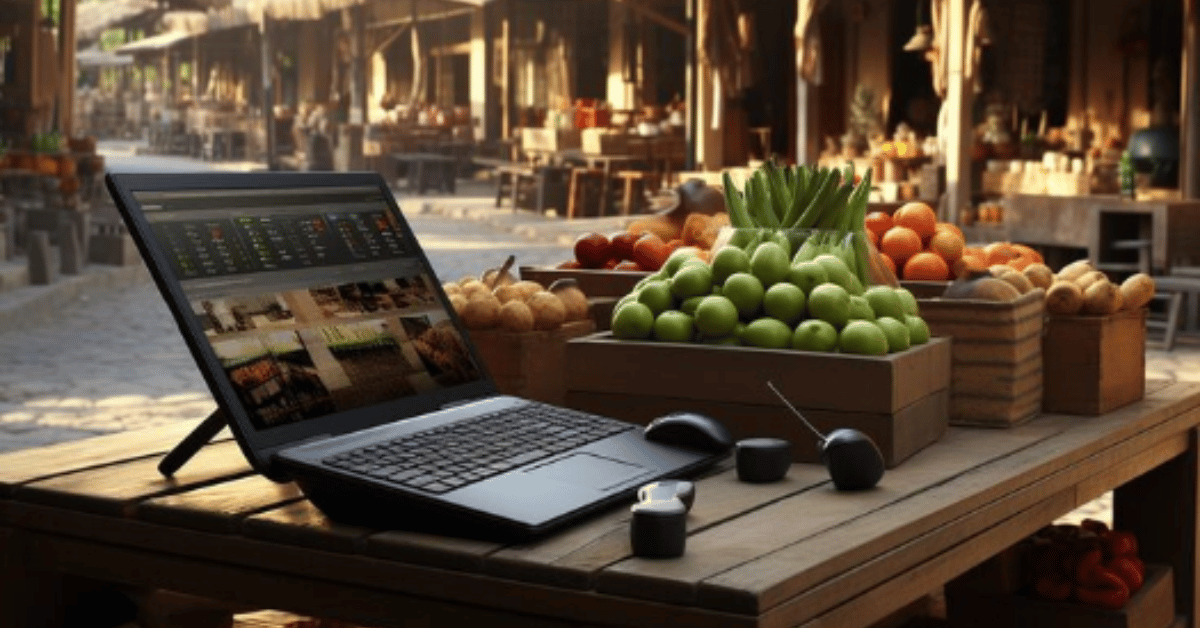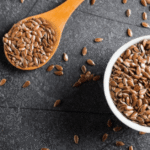In today’s digital-first food culture, the term Foodies Marketplace captures a growing ecosystem that bridges food creators, consumers, and local suppliers into one vibrant digital community. For anyone searching to understand how food, commerce, and connection converge, this marketplace model is reshaping culinary discovery and food trade alike. A foodies marketplace is not just a digital store—it’s an interactive culinary exchange where individuals explore authentic ingredients, share recipes, support small food artisans, and buy directly from local producers. Within the first few clicks, users can order handcrafted pasta from Italy, organic honey from a rural beekeeper, or learn about a trending vegan dish from across the world. It’s an economy rooted not just in commerce, but in taste, culture, and sustainability. “Food is our most universal language,” says chef Maria Taverna, “and marketplaces like these give that language a global voice.”
The Rise of the Foodies Marketplace
The global rise of digital marketplaces for food coincides with a growing hunger for authenticity and transparency. Consumers today crave stories behind what they eat—who grew it, how it was produced, and what cultural heritage it carries. The foodies marketplace has emerged as a digital bridge connecting this curiosity with accessibility. What once required travel or specialized sourcing can now be done in a few minutes online. From fermented teas to handcrafted sauces, small producers find audiences far beyond their geography. This evolution reflects how technology, sustainability, and culinary curiosity have fused into a new kind of digital dining culture. Unlike traditional e-commerce, these marketplaces are curated, experience-driven, and community-led—inviting food lovers not just to buy but to belong.
How the Marketplace Works
A foodies marketplace typically operates on a hybrid model that blends e-commerce logistics with community-driven engagement. Vendors register to showcase their unique food products—such as organic vegetables, gourmet snacks, or homemade condiments—while consumers browse, interact, and order directly from them. Advanced filtering allows users to sort by dietary preference, cuisine type, origin, and even carbon footprint. Many platforms include subscription boxes, chef-curated bundles, and seasonal offers that personalize the shopping experience. “The success of a foodies marketplace lies in its trust chain,” explains culinary entrepreneur Rafael Mendes. “Every jar, grain, or loaf carries a face and a story.”
| Feature | Description |
|---|---|
| Vendor Diversity | Includes small farmers, specialty chefs, and artisanal food producers |
| User Engagement | Reviews, stories, cooking videos, and recipe forums |
| Sustainability Metrics | Tracks sourcing, waste reduction, and eco-packaging initiatives |
| Delivery Options | Local express, global shipping, or marketplace pickup |
| Payment Models | Subscription, pay-as-you-go, or group purchase systems |
This hybrid structure makes the marketplace more than a commercial tool—it’s a storytelling platform for global culinary culture.
Why Foodies Marketplaces Are Growing Fast
The exponential rise of food marketplaces can be attributed to three key trends: conscious consumption, digital convenience, and the global food renaissance. People increasingly value what they eat not only for taste but for ethics. Buying directly from food creators supports fair trade, reduces waste, and ensures ingredient transparency. Furthermore, digital integration has made it effortless for consumers to discover authentic cuisines beyond their borders. This is particularly appealing to millennials and Gen Z, who use food as both a social identity and cultural exploration tool. Foodies marketplaces also thrive on content—videos, articles, and live chef sessions—turning commerce into community engagement. The format transforms food from a product into a shared lifestyle experience, merging entertainment, education, and ethical awareness.
Local to Global: Empowering Small Producers
Perhaps the most remarkable impact of foodies marketplaces lies in their empowerment of local producers. Farmers, small food startups, and home-based bakers who once struggled to access national or global audiences now have digital storefronts that reach thousands. Many marketplaces provide logistics support, packaging guidance, and marketing training, helping local artisans scale sustainably. “When you buy a jar of olive oil from a family farm in Greece or a spice blend from Kerala, you’re not just buying food—you’re sustaining heritage,” notes food anthropologist Dr. Leah Kim. The democratization of digital food trade means that regional tastes can now shape global palates. It’s a quiet revolution in which diversity replaces standardization, authenticity replaces mass production, and storytelling replaces advertising.
Consumer Experience and Personalization
The modern foodies marketplace thrives on data-driven personalization. By analyzing users’ browsing and purchase history, platforms recommend products aligned with their preferences—vegan, gluten-free, organic, or fusion-based. Visual storytelling, customer reviews, and AI-driven pairing suggestions enhance the experience. Imagine buying a box of Peruvian quinoa and instantly getting suggested recipes, complementary spices, and videos by native chefs. This level of personalization builds trust and curiosity. Many marketplaces integrate mobile apps that let users follow vendors, receive seasonal updates, or join virtual tasting sessions. The result is an evolving digital ecosystem where technology amplifies the human love for flavor, story, and discovery.
| User Segment | Typical Preferences | Platform Features |
|---|---|---|
| Health-Conscious | Organic, non-GMO, minimal processing | Nutritional transparency and sourcing info |
| Cultural Explorers | Global cuisines and local delicacies | Region-based filtering, cultural storytelling |
| Sustainable Consumers | Eco-friendly and ethical brands | Carbon tracking, sustainable packaging |
| Social Foodies | Influencer recipes, reviews, live events | Community engagement and sharing options |
The synergy of personalization and participation creates loyal communities rather than one-time buyers.
The Technology Behind Foodies Marketplaces
Underneath their charming visual appeal, foodies marketplaces rely on robust technological infrastructure. Cloud-based inventory systems track real-time stock and ensure fresh deliveries. AI-based algorithms match users to vendors, while blockchain integration ensures traceability of supply chains. This transparency enables users to verify origins and ethical standards. Augmented reality (AR) tools allow virtual product previews—users can visualize a dish or ingredient in their kitchen before buying. Meanwhile, data analytics help vendors forecast demand and optimize pricing. The digital backbone of these marketplaces ensures that every culinary transaction is efficient, reliable, and transparent, fulfilling the expectations of both modern consumers and conscious producers.
The Sustainability Dimension
One of the defining pillars of the foodies marketplace movement is sustainability. Consumers today demand more than convenience—they seek responsibility. Marketplaces often collaborate with local farms using regenerative agriculture or small-batch producers using minimal waste techniques. Some integrate carbon labeling, showing users the environmental impact of each purchase. Additionally, food surplus redistribution programs within these platforms minimize waste by channeling unsold items to community kitchens or charitable organizations. By fostering transparency, foodies marketplaces become instruments of environmental change, aligning culinary enjoyment with ecological mindfulness. “The new luxury in food isn’t scarcity—it’s sustainability,” says eco-chef Amanda Reyes.
The Cultural Influence of Foodies Marketplaces
Beyond commerce, these platforms are shaping global food culture by connecting people across continents through flavors and narratives. Cultural storytelling plays a vital role—vendors share family recipes, historical origins, and preparation rituals. Consumers learn to appreciate culinary diversity while discovering cultural values embedded in food traditions. As a result, the digital table becomes a space for empathy, exploration, and learning. Food transcends borders, and the marketplace becomes a form of cultural diplomacy. It creates opportunities for collaboration among chefs, writers, and farmers who share a unified passion for authenticity. In many ways, foodies marketplaces are curating the digital archive of the world’s culinary heritage.
Challenges and Future Prospects
Despite rapid growth, foodies marketplaces face challenges related to logistics, quality control, and market saturation. Fresh produce demands strict temperature management and quick delivery, while artisanal goods must maintain authenticity at scale. Regulatory frameworks also vary by region, requiring compliance with diverse safety standards. Yet innovation continues to address these barriers—AI-powered quality verification, decentralized storage networks, and blockchain-based traceability are becoming standard. The future may see more hybrid models combining virtual and physical experiences, such as local tasting events or immersive digital cooking classes. As consumers increasingly view food as both identity and activism, the marketplace will continue to evolve from a transactional model to an experiential one.
Economic and Social Impact
The economic influence of foodies marketplaces extends well beyond sales. They create new opportunities for employment, entrepreneurship, and community revitalization. Many rural regions have witnessed economic rejuvenation as local producers find digital demand for their goods. The model encourages social equity by giving small players access to global consumers. Additionally, the shared digital infrastructure reduces barriers for entry-level food entrepreneurs who might lack capital to establish brick-and-mortar outlets. The ripple effects reach far: improved livelihoods, cultural preservation, and enhanced consumer awareness. This combination of economic vitality and cultural preservation makes foodies marketplaces a cornerstone of modern food economies.
Education Through the Marketplace
Another fascinating aspect of these marketplaces is education. Many platforms have begun to integrate culinary learning modules—offering tutorials, live cooking sessions, and sustainability workshops. Consumers not only buy but also learn how to prepare, preserve, and pair ingredients responsibly. This transformation of commerce into education builds informed consumers who appreciate craftsmanship and sustainability. Schools and institutions also partner with such platforms for digital field trips that teach children about farm-to-table processes. In essence, the marketplace becomes both a shop and a school, teaching that every purchase carries environmental, cultural, and ethical consequences.
The Psychology of Food Exploration
Human psychology plays a significant role in the success of foodies marketplaces. Curiosity, nostalgia, and sensory stimulation drive engagement. Users derive emotional satisfaction from discovering rare ingredients or supporting a local farmer. This emotional engagement turns commerce into connection. Unlike generic retail, food marketplaces thrive on the joy of discovery—a dopamine-driven reward system that keeps users returning. Many psychologists note that the rise of such marketplaces fulfills a deeper human desire for belonging and cultural participation in an increasingly digital world.
The Role of Influencers and Social Media
Social media and influencer partnerships fuel the expansion of foodies marketplaces. Influencers often collaborate with vendors to feature authentic ingredients or limited-edition products, blending storytelling with commerce. Platforms such as Instagram and TikTok amplify these trends by creating viral moments around recipes or food discoveries. Visual storytelling—videos of cooking, packaging, and tasting—becomes free marketing for producers. This synergy between social media and digital marketplaces fosters a participatory food economy where authenticity and creativity are equally valued.
The Evolution Toward Immersive Culinary Commerce
As technology progresses, the next phase of foodies marketplaces is expected to be immersive and sensory-driven. Virtual kitchens, augmented tasting simulations, and metaverse-based food experiences are already being explored. Consumers could attend virtual global food fairs, interact with chefs through avatars, or customize meal kits through digital reality interfaces. This blending of physical taste with digital immersion will reshape how we perceive and purchase food. What started as online shopping will soon evolve into full-scale gastronomic exploration powered by data, design, and emotion.
Conclusion
The rise of the Foodies Marketplace represents far more than a shift in how we buy food—it symbolizes a new chapter in global culinary culture. It redefines connection, commerce, and community around shared tastes and values. By integrating technology, sustainability, and storytelling, these platforms embody the future of food as both an ethical and experiential journey. They empower small producers, educate consumers, and preserve culinary traditions while fostering innovation. The foodies marketplace is not just changing what we eat—it’s reshaping how we understand the meaning of food itself. “To taste is to travel,” writes food historian Carlo Alvarez, “and the new marketplace is our passport.”
FAQs
1. What is a foodies marketplace?
A foodies marketplace is an online platform connecting food producers, chefs, and consumers, enabling direct trade and cultural exchange centered around culinary experiences.
2. How does it support local producers?
It provides digital storefronts, logistics help, and visibility to local artisans, empowering them to reach broader audiences sustainably.
3. Are foodies marketplaces environmentally sustainable?
Yes, most prioritize eco-friendly sourcing, carbon tracking, and minimal waste through transparent supply chains and sustainability programs.
4. What technologies drive these marketplaces?
AI personalization, blockchain traceability, cloud-based logistics, and augmented reality experiences support trust, efficiency, and engagement.
5. What’s the future of foodies marketplaces?
They’re expected to become immersive ecosystems combining digital shopping, cultural education, and sustainability-driven innovation for a global audience.











